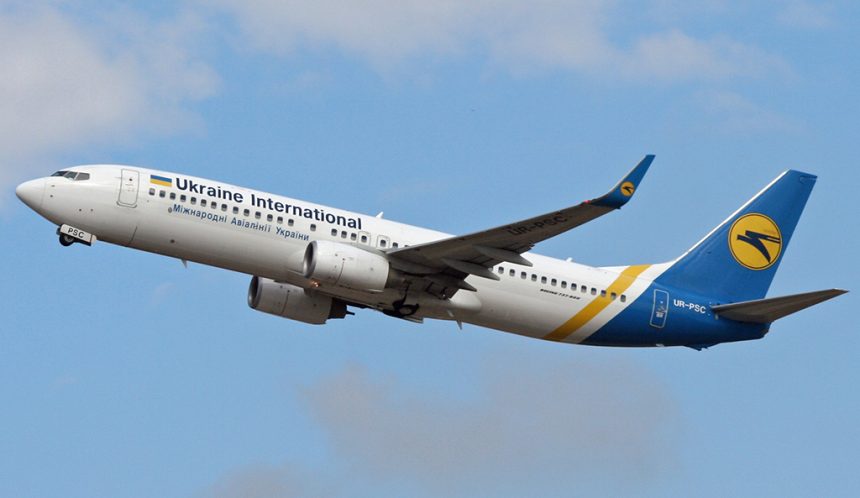Ukraine International Airlines Boeing 737 has crashed in Tehran. The incident occurred few hours after the Iranian strikes on U.S. Forces in Iraq, sparking speculations it was shot down by accident.
A Ukraine International Airlines Boeing 737 crashed shortly after take-off from Iran’s Imam Khomeini airport in Tehran early in the morning on Jan. 8, 2020. The information surfaced just as networks were suggesting the U.S. may back down from earlier threats of retaliation after Iranian missile strikes on al-Asad and Irbil military bases in Iraq.
There were 180 passengers on board flight PS752 at the time of the accident. The aircraft was a Boeing 737-800 registered under tail code UR-PSR and delivered to the Ukrainian airline in 2016. The flight was bound for the Ukrainian capital of Kyiv. No survivors have been reported as video and photos of the accident surfaced on social media.
We are following reports that a Ukrainian 737-800 has crashed shortly after takeoff from Tehran. #PS752 departed Tehran at 02:42UTC. Last ADS-B data received at 02:44UTC. https://t.co/qXWHUPGDTu pic.twitter.com/vuAi6TOqTp
— Flightradar24 (@flightradar24) January 8, 2020
One Twitter account, @MohamadAhwaze, showed video that is claimed to be of the Ukraine International 737 crashing. The video appears to show an object trailing flame as it descends at a moderate trajectory until it flares brightly on impact. The authenticity of the video has not been verified.
أول مقطع فيديو من تحطم طائرة تابعة لشركة الخطوط الجوية الأوكرانية من طراز بوينج 737 على متنها 180 راكباً في العاصمة الإيرانية طهران الان . pic.twitter.com/CSYjq6mfPO
— محمد مجيد الأحوازي (@MohamadAhwaze) January 8, 2020
Moments before the news of the Ukraine 737 crash at Tehran surfaced on Twitter and the BBC World News, the civilian OPSGROUP aviation advisory service issued an email “Call to Respond” to pilots in the region for information about Iranian air traffic control operations.
In the email from OPSGROUP, the following information was provided:
“We have had two reports from members that were operating in the Tehran FIR at the time. One was enroute to OMDB and given a 180° turn to exit the airspace, by Iranian ATC. Another N-registered aircraft was given revised routing out of the Tehran FIR, destination was OMDW. They had declared minimum route fuel and were asking to continue forward, and were denied. Tehran appears to have quite literally uninvited N-reg aircraft from their airspace. From previous Iran warnings, OPSGROUP members say: ‘Even if the operator/pilots think they will come close or penetrate Iran’s Airspace they should contact Iran Air Defense on 127.8 or 135.1’. If the Iranians have an unidentified aircraft on their radar and not in contact with them they will transmit on guard with the unidentified aircraft coordinates, altitude, squawk (if there is one), direction of travel and then ask this aircraft to identify themselves as they are approaching Iranian ADIZ.” [ADIZ is an acronym for “Air Defense Identification Zone”.]
Immediately prior to and during the time period when the Ukraine 737 went down over Tehran, most of the aircraft seen on the flight tracking service FlightRadar were Iranian registered aircraft. These were civilian aircraft, both commercial and general aviation, having either been routed out of the area by Iranian ATC or left the area on their own.
Iranian news agencies quoted by CNBC say that the “plane crashed due to technical difficulties”. There was no report of how Iranian authorities were able to determine or speculate about the cause of the crash. There have been no reports published so far of a distress call from the aircraft. A report that surfaced this morning on the BBC World News said that, “Ukraine’s Tehran embassy initially blamed engine failure but later removed the statement.” While speculation about the cause of the accident is widespread on social media, no theories about the cause of the crash have been verified yet. The BBC World News went on to report that, “Ukraine’s president, Volodymyr Zelensky, warned against ‘speculation or unchecked theories regarding the catastrophe’ until official reports were ready.

Despite statements urging observers not to theorize about the cause of the crash, speculation that the aircraft was shot down accidentally by Iranian air defense, which was on heightened alert after launching attacks on Iraqi bases, has spread quickly on Twitter following the video posted by @MohamadAhwaze. These speculations add to the rising amount of unverified reports surfacing on social media.
Reading a lot of unverified reports about U.S. jets launched after the Iranian attack on Erbil and Al-Asad Air Base. Quite unlikely if it’s confirmed to be a missile attack: only reason for scrambling jets would be to escape ground damage. Let’s wait.
— David Cenciotti (@cencio4) January 8, 2020
Information Warfare. https://t.co/g4ocHqE6GS
— David Cenciotti (@cencio4) January 8, 2020
Whatever the cause of the crash, the accident has significant implications. Boeing’s new Chief Operating Officer, David Calhoun, is set to take command of the Seattle, Washington aircraft manufacturer in only days. Calhoun replaces former CEO Dennis Muilenburg, who left the position at Boeing in December in response to the problems associated with the civilian 737-MAX.








